Problem Solving Maps International Summit
Listen to 39 different presentations done by teachers using the Problem Solving Maps approach to teach mathematics

Free for teachers, parents, and educational consultants!
What is the problem solving maps method.
Problem Solving Maps (PSM) are graphical representations of critical thinking processes needed to solve math problems successfully. The maps are 1) Example-Conclusion Map, 2) the Multi-Rule Map and 3) the Math-Breaker Map. The purpose of these maps is twofold: 1) to provide support in learning a specific topic and 2) to map out problem-solving strategies that are generic enough to be used on a large variety of math content.
- Instructors, tutors or parents can use PSM to teach a large variety of topics
- PSM do not take a long time to learn
- Students learn thinking and problems solving skills that are transferable from one math topic to the next
- PSM are very effective to diagnose where students are having trouble
- With PSM, students can have better notes to study
- With PSM, student can improve self confidence and performance
Listen to 39 presentations of teachers using Problem Solving Maps
Extending and Completing a Pattern by Elisa T. Maramag
Visualizing, Representing, And Converting Liter And Milliliter From Larger To Smaller Unit And Vice-Versa by Jhoanna Marie T. Teru
Ordering Numbers with the Multi-Rule Map by Jamaica F. Lacson
Square Of A Binomial by Jean Aiko C. Domingo
Finding The Surface Area Of A Cylinder by Darwin B. Lico, PhD Order Of Operations PEMDAS Rule Using The Multi Rule Map by Myrna B. Mallanao Teaching Mathematics Using PSM Approach: Finding The Area Of A Composite Figure by Mary Jean A. Nalunat The Effectivity Of Problem Solving Maps To Improve Academic Performance Of Grade 6 Learners In Mathematics by Rowena R. Yumul
Product Of Cube Of Binomial Multiplication Of Integers (Using Example Conclusion Map) by Arjon Paul D. Dela Paz Multiplication Of Integers (Using Example Conclusion Map) by Jonah M. Asuncion Factoring Perfect Square Trinomials Teaching Complementary And Supplementary Angles Using The 3 Problem Solving Maps (PSM) by Novy H. Facun Teaching Complementary and Supplementary Angles Using the 3 Problem Solving Maps (PSM) by Katherine A. Matarlo Solving Problems Involving Sides And Angles Of A Polygon by Reina Ross Yumul Solomo Measures Of Variability Of Ungroup Data by Fatima L. Tambago Teaching Laws Of Exponents Using Example Conclusion Map by Anna Lisa T. Dela Rosa Improving Mathematics Aptitude Of Grade 7 Students Of Sauyo High School Through Problem-Solving Maps by Grace D. Gutano
Solving Systems Of Linear Equations By Elimination Method Using Problem Solving Maps by Evelyn C. Torrefranca Fundamental Counting Principle by Aimee Rose A. Galicia Integrating Problem Solving Maps In A Video Lesson On Grade 8 Mathematics, Triangle Congruence Postulates by Joshua P. Salazar Proving The Congruence Of Triangles Using SAS Postulate by Mary Ann L. Abundo Proving Triangle Congruence Using Multi Rule Maps by Aileen D. Canonicato
Angle Of Elevation And Angle Of Depression by Lahlyn G. Unica Problem Solving Maps (PSM) A Problem Solving Strategy To Lessen The Mathematics Anxiety Level Of Grade 9 Students by John Richard L. Quiambao Transforming Standard Form Of Quadratic Function Into Vertex Form by Charnel D. Santos Enhancing Student's Performance In Variation With The Use Of Problem Solving Maps (PSM) On Selected Grade 9 Students by Elmer L. Cinco PSM Completing The Square by Sherrelle Francisco Mendoza Maxie And Minnie Application Of Maximum And Minimum Of Quadratic Functions by Sheryl F. Dullano Solving Problems Involving Trigonometric Ratios Using MRM And MBM by Queenie Pearl E. Domasig Law Of Sines by Ken-Ken A. Bormate Addition And Subtraction Of Radicals by Jonofre M. Borja
Synthetic Division by Karen T. Basada Math Breaker As A Tool In Solving Problems Involving Permutations by Randy Dela Vega Utilizing Math-Breaker Maps To Improve Performance In Mathematics And Self-Efficacy Of Students In Online Distance Learning by Joshua P. Salazar Investigating The Use Of Example-Conclusion Maps For Mathematics Enhancement Program by Benigno F. Baluyut The Use Of Math - Breaker Maps In Improving The Performance Of Grade 10 Mathematics Learners In Solving Problems Involving Probability by Zenaida W. Halili Geometric Mean by Charisma T. Banag Solving Problems Involving Probability Of Union Of Two Events And Joint Events by Jona M. Zapata Circle Theorems (Angles In A Circle) by Rhon C. Suliva
Rational Inequalities by Rachelle Anne Marie S. Adriano
Praises for Problem Solving Maps

"We are glad that we turned to the Problem Solving Maps (PSM) system as one of one of our strategies to improve students' quantitative thinking skills in the Philippines. We have been able to positively impact thousands of students in our schools."
Dr. Jeni Corpuz Superintendent, Department of Education - Philippines

"I attribute much of the success of my Math students to the use of the Problem Solving Maps (PSM). This mathematical tool helped my students understand different concepts in Math, which are crucial to their success not only in school but in preparation for the Math portion of the ACT and SAT Tests as well".
Felesia M. Harrel Johnson Founder, College Bound Academic Center - USA

"We have observed that with Problem Solving Maps (PSM) students get a deeper and quicker understanding of math concepts for topics that are usually challenging. PSM methods are without a doubt a cutting edge process to teach quantitative and logical reasoning skills."
Maciej Winiarek Critical Thinking Specialist - Poland

"The Problem Solving Maps are helping our students make concrete their thinking about abstract concepts. This process also allows teachers to clearly see where students are struggling so they can address these concerns easily and directly."
Vikki Wandmacher Principal, White Pine Middle School - USA

"The [PSM] math tools enable us to organize our thought by a pattern. Learning a thinking pattern makes life much easier, not only in studying math but also in various aspects of everyday life."
Motoi Tobita, Ph.D., Master Lead Facilitator, TOCFE - Japan

"With the Problem Solving Map (PSM) system, it is very easy to find out the gaps students have in their knowledge. I am glad I learned PSM so I can help my students being successful."
Karyna Lopez Award Winning Math Teacher-Mexico
How the summit works
Fill out the registration form, you will be added automatically to the summit site and receive a welcome email, follow the email instructions to set your password, you will have access to the presentations, leave a comment for your fellow teachers who made the effort to create their presentations, you will have access to watch the presentations at any time, macatangay, ma. rossell b. macatangay.
Review of PSM
I would like to commend the preparation of different insightful presentation that will definitely be a big help to teachers. Congratulations!
Onuorich De Lara
Congratulations to all the presenters, I learned a lot from the presentation. Here I realized how lucky are the pupils if all the teachers learned this PSM.
Niña Resan Niña Resan
I would like to congratulate all the presenters for a job well done! Watching all the presentations made me want to use PSM in my lessons for better understanding of my students. Thank you for this free summit. Iearned a lot ?
Rosette S. Dela Cruz
Watching all the presentations inspired and motivates me to use PSM in my classes. After watching, the presentation, it made me realize that it is doable for me.
Congratulations to all. The first summit show how teachers apply the PSM in different lessons in Math. To make math enjoyable and easy to understand. (Sobrang gagaling nyo pong lahat ma'am and sir)
Ludivina A. Porcare
PSM review.
Congratulations to all presenters. The strategies presented will surely be a big help to teachers in teaching the subject. Kudos to all presenter and organizer of this summit.
Rate this course
Choose your rating

Sign up for our newsletter!
Want to stay up-to-date on industry trends?
Read our new Case Study on Cypress Elementary.
- TMLC Support
- Training Calendar
Mastering Mathematical Thinking
JUNE 13, 2022
What does it mean to “think like a mathematician”? Math is much more than following rote processes and plugging numbers into equations. Math is a way of looking at and thinking about our world. When students understand the “why” and “how” behind the math they are learning, they become flexible, intuitive problem solvers.
But mathematical thinking isn’t something that comes naturally to most of us. It needs to be specifically taught, nurtured and developed. To be successful with higher math, students need to develop deep cognitive structures for problem solving and mathematical thinking. Thinking Maps give students a structure for thinking mathematically and explaining their reasoning.
Want to know more? Join our upcoming webinar: Building Deep Structures for Mathematical Thinking .
Mathematical Reasoning: Thinking Like a Mathematician
Math is an activity with a very high cognitive load . Students need to be able to follow processes and instructions, juggle all of the information provided in the problem, and recall prior knowledge and skills. Math also requires significant reading comprehension skills to understand directions or deconstruct a word problem.
One of the biggest problems many students have in math is simply knowing where to start and what kind of thinking is required. Math involves many different types of cognition: comparing, classifying, generating ideas and solutions, following processes, if…then thinking, and decomposing numbers, shapes, or formulas, to name a few.

Mathematicians know how to apply and combine these types of thinking flexibly to solve many different types of problems. Visual Thinking Maps help students activate the right kinds of thinking for the problem at hand. For example, consider the problem of finding the surface area of a rectangular prism. Where do you start? What kind of thinking is required?
One way to tackle this type of problem is with “part-to-whole” thinking. A rectangular prism has 6 flat surfaces: 4 sides and 2 ends. If I know how to find the area of a rectangle, I can calculate the area of each surface individually and then add them together to get the whole area. We can show this thinking in a Brace Map like this:
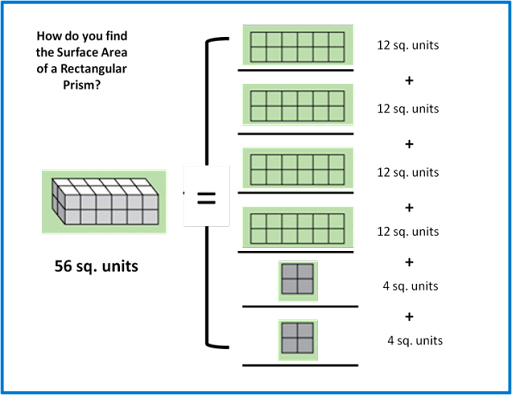
Now, the problem isn’t so intimidating. I just add up the parts to get the whole! This is an example of decomposing to solve a problem.
Or suppose students need to find equivalent decimals and fractions. How is a decimal related to a fraction? A Bridge Map is a great way to show this relationship, using the relating factor “is equivalent to.”
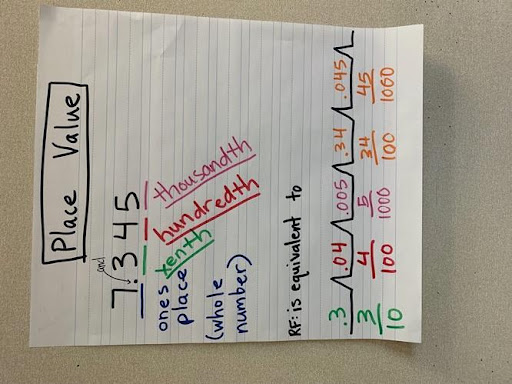
Let’s Talk Math: Mathematical Discourse
Today’s math standards and assessments require students to do more than just come up with the right answer. Students need to be able to explain their thinking, either orally, visually or in writing. Mathematical discourse is an important skill in its own right and a critical part of developing mathematical thinking. When students go through the process of explaining their answers, they are cementing their knowledge, exposing and filling knowledge gaps, and deepening their understanding of the “how” and “why” of mathematical problem solving.
Consider this word problem:
I put a number in a bag. It is between 15 and 20. It is an even number. It is not 18. What number is it?
How do we start this problem? Students could just guess, but a systematic approach helps them get to the answer faster—and builds problem-solving skills they can apply to more complex problems later. This Flow Map helps students explain their thinking as they come up with the right answer.
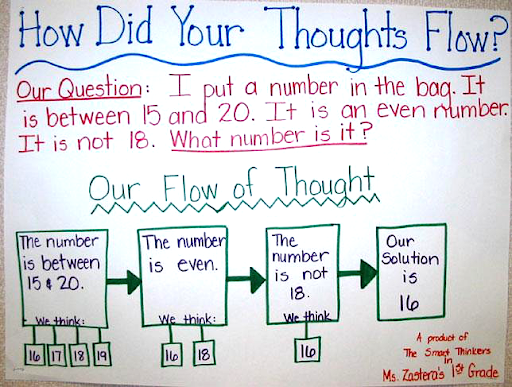
The Map is a great visual representation of their thinking process. They can also easily take information back off the Map to explain their process in writing. This kind of exercise is a great way to help students prepare for state assessments that require them to explain their thinking in writing.
Reducing the Cognitive Load of Math
When students have a clear structure for approaching problem solving, the cognitive load of math is significantly reduced. Students in a Thinking Maps school learn how to use the Maps in a variety of ways to build mathematical knowledge, skills and reasoning. For example, students learn to use the Maps to:
- Use “signal words” like take apart , leads to , is the same as , or types of to activate the right kind of thinking for a problem.
- Define mathematical terms and gather prior knowledge.
- Explain and follow the steps in mathematical processes.
- Deconstruct word problems for easier problem solving.
- Compare and classify related concepts, equations, shapes or numbers.
- Decompose shapes, equations or sets into their constituent parts.
- Solve a variety of problem types using “if…then” thinking.
- Visualize mathematical relationships.
Using visual Maps makes mathematical thinking concrete and visible. Students are now equipped with a variety of tools to tackle all kinds of problems—so instead of staying stuck when they reach a problem they don’t know how to solve, they can start looking for clues that tell them which kind of thinking they should reach for. Over time, practicing these skills develops solid problem-solving habits and deep cognitive structures for mathematical thinking.
Download the webinar to learn more .
Continue Reading
April 15, 2024
Scientific thinking empowers students to ask good questions about the world around them, become flexible and adaptable problem solvers, and engage in effective decision making in a variety of domains. Thinking Maps can help teachers nurture a scientific mindset in students and support mastery of important STEM skills and content.
February 15, 2024
A majority of teachers believe that students are finally catching up from pandemic learning losses. But those gains are far from evenly distributed—and too many students were already behind before the pandemic. To close these achievement gaps, schools and districts need to focus on the underlying issue: the critical thinking gap.
January 16, 2024
Student engagement is a critical factor in the learning process and has a significant impact on educational outcomes. Thinking Maps enhance engagement by encouraging active participation in the learning process, facilitating collaboration, and providing students with structure and support for academic success.
November 15, 2023
Project-based learning (PBL) immerses students in engaging, real-world challenges and problems. Thinking Maps can give students a framework for thinking, planning and organizing their ideas in the PBL classroom.
Academia.edu no longer supports Internet Explorer.
To browse Academia.edu and the wider internet faster and more securely, please take a few seconds to upgrade your browser .
Enter the email address you signed up with and we'll email you a reset link.
- We're Hiring!
- Help Center

"Improving Students' Problem Solving Skills in Mathematics using PROBLEM SOLVING MAPS in Grade 4 pupils of Plaridel Elementary School"

Problem Solving Skills is one of the most important factors for students to solve problems in Mathematics and think critically. The skills that we need in order to be able to think critically are varied and include observation, reflection, evaluation, inference, explanation, problem solving and decision making. This Action Research describes the implementation of PROBLEM SOLVING MAPS to enhance students thinking skills of Grade 4 Pupils in Plaridel Elementary School. The Classroom Action Research was conducted last quarter of the grading period. As the result of application using Problem Solving Map, it is found out that 39 out of 44 pupils or 88.64% of the pupils have showed improvement in Problem Solving Skills and only 5 pupils or 11.36% of the pupils needs more appropriate practice and remediation program. Several factors may be contributed to Problem Solving Skills difficulties. One factor is that most pupils are struggling in basic mathematical operations and reluctant to solve mathematics problems. It is for this reason that the researcher conducted an action research to find some teaching strategies that will improve the problem solving skills of Grade 4 pupils of PlaridelElementary School using PROBLEM SOLVING MAPS. Introduction:
Related Papers
IOSR Journals publish within 3 days
Critical thinking is one of the important indicators for students to be competing in the world of work and personal life, students must have the ability to solve problems and must be able to think critically. One effort to improve critical thinking skills, especially in math lessons is to implement problem-solving learning. This article describes the implementation of problem-solving learning in improving students' critical thinking skills of grade VIII SMP Negeri 5 Bulukumba obtained through classroom action research that is conducted for 2 cycles with the result that with the application of learning problem solving can improve the ability of critical thinking as seen from the indicators the success of 35 people or 87.5% of students have completed learning mathematics and as many as 5 people or 12.5% of students have not finished learning math. In addition, the activity of students in the learning process also achieved the success indicator that overall there is 70.5% in the first cycle increased to 88.5% in cycle II and the implementation of learning (the ability of teachers in managing class and student activities) increased in the same category the good category.
Rahmah Johar
This study investigated pre-service teachers’ perception of the effectiveness of teachers’ effort on developing democratic classroom in video excerpts. Pre-service teachers watched video excerpts of teacher efforts on developing democratic classroom. There are 30 participants in the second year of the teacher education program in Aceh, Indonesia, provided data for the study. They enrolled in a Teaching and Learning Mathematics Strategy II for primary school. They fill observation form. The data indicated that many pre-service teachers struggled to identify evidence of democratic classroom. According to the evidence proposed, it was most likely that the pre-service teachers considered democratic means teacher should listen to their students. Most of the pre-service teachers also thought that rule and its penalty should be proposed by teacher. However, as they observed more videos, they became more aware of democratic classroom, thus they can provide more evidence and more ideas about how to improve a better democratic environment in classroom.
International Symposium on Mathematics Teaching Published Proceedings
Megan Burton
This study examines the evaluation of student thinking by teacher candidates when they are observing and when they are engaged in the practice of teaching during a mediated field experience. Teacher candidates co-led elementary science, technology, engineering, and mathematics summer experiences for three weeks. Data from three teacher candidates in one classroom of eighteen children ages seven to eight were examined. Teacher candidates observed students when peers were teaching and also examined work and took anecdotal notes during their own teaching experiences. These data were analyzed using Interpretative Phenomenological Analysis. Findings provide insight into teacher candidates’ perceptions of elementary students’ mathematical thinking when in various field experience roles. This insight can help teacher educators plan experiences that deepen teacher candidate understandings of student thinking.
PROJECT-BASED EDUCATION AND OTHER ACTIVATING STRATEGIES IN SCIENCE EDUCATION XVI
Martin Rusek
This contribution aims at the actual meaning of results gained from student testing via problem tasks. According to Koreneková (2018), positive responses do not necessarily mean that students managed to solve the problem tasks and reached the expected outcomes defined in the national curriculum. Concurrent think-aloud method was used to identify strategies students (N = 16) used to solve problem tasks. The results were worse than in the pilot testing of the same tasks. Many false-positive results were identified which puts the original test results into question.
Proceedings of the Seventh Conference on Research in Mathematics Education in Ireland (MEI 7)
Aisling Twohill
It is with great pleasure that we present the following proceedings from the Seventh Conference on Research in Mathematics Education in Ireland (MEI 7), which took place in Dublin City University in October, 2019. Our conference theme Mathematical Literacy, throughout and beyond education aims to foreground learners’ engagement with mathematics at all stages of the education system, and their development of mathematical proficiency within and beyond formal classroom settings. Mathematical literacy encompasses a learner’s proficiency to engage fluently with mathematical concepts, and to apply mathematical thinking in non-routine and novel situations. Mathematically literate children and adults recognise the mathematics in a situation, and understand how to mathematise a scenario in order to problem solve. Equally, mathematical literacy includes the capacity to interpret and analyse scenarios presented through mathematics. Mathematically literate individuals are thus less vulnerable to being convinced by inaccurate interpretations of data and mathematics. A key aspect of mathematical literacy is fluency in expressing one’s mathematical thinking in a clear and convincing manner. The notion of what it means to be mathematically literate is to a large extent dependent on the context in which mathematics is used. Some consider performance in examinations to be a determinant of the level of mathematical literacy. However, successfully completing daily activities and routines such as travelling and cooking all rely on fundamental mathematical literacy, for example, knowledge of distance, time, weight and temperature. For educators, mathematical literacy encompasses far more than an ability to do mathematics oneself, but also to be able to ascertain where the learner is at in their mathematical understanding and to scaffold and extend that learning. The education system in Ireland plays a key role in developing the mathematical literacy of all learners, to support full engagement with 21st century society. Central to such active citizenship is the propensity to apply mathematical concepts beyond the walls of the various classrooms where mathematics is taught; at primary, secondary and third levels. In these proceedings of MEI 7, we present papers that reflect a broad variety of mathematical research that is taking place in Ireland and further afield. Collectively, the authors seek to solidify and progress the research field of mathematics education, throughout and beyond Ireland.
September 2018
JEGYS Journal
The purpose of this analytical review was to investigate the uses of the TASC model to teach gifted students and develop their creativity. The researcher decided to select studies of the TASC model, which were not used by Maker, Alhusaini, Zimmerman, Pease, Schiever, and Whitford (2014) in the Saudi project. The studies included 30 out of 367 studies that were chosen for the Saudi project. Out of the 30 studies, the researcher selected 15, which he identified as school-based projects in which the TASC model was specifically used or described in teaching. The researcher also added six books that were written by Belle Wallace and colleagues. All of the reviewed publications suggested that the TASC model has been an effective, useful, and practical method with all students from different grade levels and of different abilities (especially with those who were gifted), as well as in all different content areas, to teach students and develop their creativity. The researcher identified limitations across the reviewed studies and publications, such as omissions of data collection procedures, data analysis processes, and lack of information about the participants as well as the interventions. Also, most of the studies provided qualitative results with no further discussion or explanation. More high quality research is needed to improve the scholarly conversation around this model.
Journal of Indian Education
seema shukla ojha
History is a written record of human experiences across time and space. The learners of history need to relate various kind of available sources to understand historical events and concepts. It is however observed that the classroom teaching in history is blended with a collection of facts, rote memorisation leading to boredom, leaving very little space for critical thinking among students. It is pertinent for teachers to evolve effective ways of learning history to generate and retain interest in the subject. How we can make the teaching-learning of history effective in schools, is a question frequently asked in different forums. This paper is the outcome of an educational intervention, with an objective to explore the effectiveness of integrating student-centred measures in a social science classroom at the elementary stage as a medium to enhance critical thinking skills and student engagement.
Mohammed Al-Amri , Abdullah Ambusaidi
The idea of integrated curricula is one of the ideas which have been suggested for developing curricula and improving teaching methods and techniques, especially the ones associated with young children. The integration between science and art has a long history since both subjects are highly interrelated to each other. Science benefits from art in many ways such as explaining scientific phenomena, drawing and building sciences' models, whereas art benefits from science by using scientific phenomena as a source for developing: (1) drawing and painting and (2) children's imagination. The aim of the current study is to investigate the impact of using the integration approach between science and art to develop science process skills among 5th grade female students. The sample consisted of 58 female students which were divided into two groups; the experimental group (N=29) which was taught the science content by the integration approach and the control group (N=29) which was taug...
Muhammad Yaumi
This study was designed to promote teachers’ understanding of the learner-centered approach through training the multiple intelligences-based instructions, improve teachers’ performance in designing learner-oriented instruction, and improve teachers’ performance in implementing instruction. This study used proactive action research involving 126 teachers (informants) as trainees and instructional design members, came from 10 elementary Madrasah in Indonesia, 36 of them were mentored, and 192 students participated in a focus group discussion. There were 10 principals and two supervisors to be research collaborators. Teachers’ understanding and performance improvement through training multiple intelligence-based instructions, designing student-centered approach, and mentoring the implementation of student-centered learning indicated significant contribution. The teachers’ understanding of multiple intelligence-based instruction was the majority in the good category. The activity of designing the student-centered approach gave a good contribution to the capability of designing every single one of the multiple intelligences-based strategies. The mentoring system improved teachers’ performance greater than those of training and instructional design. Implementation of training, instructional design, and the mentoring system implies improving learning processes and outcomes. Strengthening the recruitment system of teachers and performance improvement, capacity building of educators to design models, approaches, strategies, methods, and learning activities, as well as establishing togetherness on all lines; government, principals, supervisors, community, and teachers as the primary element.
Dawood Al-abri
RELATED PAPERS
Mustafa SOZBILIR
Asmuni Asmuni , Asmuni Asmuni
International Group for the Psychology of M athematics …
Ann Gervasoni
MARILYN CASTRO
PATT36, Research and Practice in Technology Education: Perspectives on Human Capacity and Development
Belinda von Mengersen
Fariza Khalid
Laurie D Edwards
Marjannah Mangotara
Kaca Cihakova
TEACHERS AND TEACHING …
Claudia Melear
University of St. Lasalle
Melalyn Parales
Julan Daguil
Proceedings of the 29th Conference of the …
FERNANDO HITT
International Group for the Psychology of M …
Núria Planas
Juliet Ampoful
Rashida Kapadia
Jerry Becker
Asmuni Asmuni
Monte Claro Elementary
Pedagogical Research
Ifigenia Iliopoulou
diani nurhajati
Dharel Acut
Kafoussi, S
Journal of Analysis and Computation (JAC)
Rajadurai Rajkumar
Isabel Vale
Roman Dorczak
Ali Delice , Eyup Sevimli
Ana Campina
Isabel Cabrita
International Group for the Psychology of …
International Group for the …
Libreriauniversitaria.it Edizioni
Florian Meyer
Maryna Rafalska
Jovanni De Guia
Jovan De Guia
Edlight Mutungwe
RELATED TOPICS
- We're Hiring!
- Help Center
- Find new research papers in:
- Health Sciences
- Earth Sciences
- Cognitive Science
- Mathematics
- Computer Science
- Academia ©2024
Mathematics Assessment Project
Assessing 21 st century math, welcome to the mathematics assessment project, materials from the math assessment project.
The Mathematics Assessment Project is part of the Math Design Collaborative initiated by the Bill & Melinda Gates Foundation. The project set out to design and develop well-engineered tools for formative and summative assessment that expose students’ mathematical knowledge and reasoning, helping teachers guide them towards improvement and monitor progress. The tools are relevant to any curriculum that seeks to deepen students' understanding of mathematical concepts and develop their ability to apply that knowledge to non-routine problems.
More about the Math Assessment Project
Formative Assessment Lessons: Classroom Challenges
100 lessons for formative assessment, some focused on developing math concepts, others on solving non-routine problems. A Brief Guide for teachers and administrators (PDF) is recommended reading before using these lessons for the first time.
Summative Assessment Tasks
A set of 94 exemplar summative assessment tasks to illustrate the range of performance goals required by CCSSM. The tasks come with scoring rubrics and examples of scored student work.
Prototype Tests
Complete summative test forms and rubrics designed to help teachers and students monitor their progress using a range of task types similar to the 'Tasks' section.
Professional Development Modules
5 Prototype modules that encourage groups of teachers to explore the practical and pedagogical concepts behind the materials, such as formative assessment, collaborative learning and the use of unstructured problems.
The TRU Math Tools Suite
The Teaching for Robust Understanding of Mathematics (TRU Math) suite is a set of tools with applications in Professional Development and research based around a framework for characterizing powerful learning environments.
State, district and CCSSI standards appear courtesy of their respective authors. All other material Copyright © 2007-2015 Mathematics Assessment Resource Service, University of Nottingham.
![The Shell Center for Mathematical Education [Shell Center Logo]](https://map.mathshell.org/img/shell_white.png)

Mathematics Problem Solving
Mathematics has a language of its own based on the number system, but it is also based on students begin able to see patterns in number, and in data, and then solve problems that are based in real life contexts. The research in this section is anchored by the research by a middle school teacher (and Christa McAuliff scholar) who systematically used Thinking Maps with her underachieving students. In addition, Kathy Ernst, a national leader in mathematics instruction describes in detail and shows how she uses Thinking Maps to coach and mentor math teachers. We strongly suggest you look into her book co-written with Sarah Ryan: Success from the Start: Your First Years Teaching Elementary Mathematics” published by the National Council of Teachers of Mathematics.

Click on the PDF icon to download
Student Successes With Thinking Maps® David Hyerle and Larry Alper coeditors Corwin Press, Second Edition, January 2011, Thousand Oaks, California

Chapter 8: Meeting the Challenge of High Stakes Testing in Middle School Mathematics Janie B. MacIntyre, M.Ed.
Thinking Maps allow you to see where you have made your mistake, and how to show your math in words that make sense’ - Student
The statistics indicate considerable growth in mathematical achievement, so how and why does applying thinking maps in math instruction improve math ability as measured on these tests?
Key sections from the chapter The Challenge of High Stakes Testing in Middle School Mathematics with excerpts above include:
Facing Myself and My Students
Beyond Intuition
Results: Gains in Developmental Growth
Thinking Maps: A Bridge to Success
Beyond Test Scores
Janie B. MacIntyre, M.Ed. is a middle school teacher, researcher, and educational consultant who was named as a USA Today Teacher Team member and a Christa McAuliffe Scholar.
An Evaluation of Students’ Perception of Thinking Maps® in the Middle School Mathematics Classroom By Heather A. Mors, Kennesaw State University, Atlanta, United States. 2015
The findings of this research indicate that students are using Thinking Maps® for knowledge acquisition, namely in the form of note taking. In addition, Thinking Maps® provide a bridge between prior knowledge and targeted knowledge by breaking problems down into parts that the students can understand. Finally, students report that Thinking Maps® helped them answer complex math problems by breaking the problems into smaller parts and showing the steps to solve problems. The findings of this research should be used to guide teacher practices. Regardless of their feelings, most of the students perceived the benefits of using Thinking Maps®. Students recognized that Thinking Maps® helped them solve math problems, break problems down and make problems easier to understand. The data from the survey is consistent with the interview data with 54.4% of students agreeing or strongly agreeing that Thinking Maps® is beneficial for solving math problems and 64.9% of the students agreeing or strongly agreeing that Thinking Maps® are beneficial for answering critical thinking questions. Additionally, students were very interested in the electronic platform of Thinking Maps that allows the students to focus less on the map construction.
The Relationship Between Thinking Maps® and Florida Comprehensive Assesment Test® Reading and Mathematics Scores in Two Urban Middle Schools By Ana Delgado Diaz, University of Central Florida, Orlando, United States. 2010
Statistical analysis did not result in significant differences in the use of Thinking Maps® as measured by FCAT but there were percentage differences that may indicate educational significance for Hispanic, economically disadvantaged and English language learners in FCAT Reading and for white, black and students with disabilities in FCAT Mathematics. Results of this study should not discourage the implementation of Thinking Maps® instruction as visual tools for learning. FCAT may not be an appropriate instrument to measure if an instructional visual tool such as Thinking Maps® makes a difference in student achievement. A better measurement tool would be for teachers to develop rubrics that can be used to assess student generated Thinking Maps® or use rubrics provided in the Thinking Maps ®: A Language for Learning (Hyerle & Yeager, 2007) training manual.
Chapter 17 : Mentoring Mathematics Teaching and Learning Kathy Ernst, M.S.
“So many people have come into my classroom with vague advice and comments that have just made things worse. This is the first time anyone’s given me concrete suggestions about what I can do. This has been really helpful—thank you.” Teacher (after Kathy and colleague used the Flow and Multi-Flow Maps in post-conference supervision conversation)
Key sections from the chapter Mentoring Mathematics Teaching and Learning with excerpts above include:
Tools For Focused Observation and Reflection
Tools For Explicit Coaching In Model Lessons
Part 1: Lesson Planning/Orientation
Part 2: Lesson Observation
Part 3 Reflective Conversation
Imagining the Possibilities
Kathy Ernst, M.S. has spent 30 years teaching children and teachers in elementary and middle schools and has served on the faculty of the Leadership in Mathematics Education Program at Bank Street College of Education. She has facilitated the implementation of standards-based mathematics curricula in schools, working with teachers to support children’s construction of mathematical ideas.
2004 Final Report Thinking Maps North Carolina School Study By Nancy Cook Smith, Ph.D., North Carolina, United States, 2005
This study compares the gains in standardized test scores made by North Carolina schools that adopted Thinking Maps after 1997 and before 2002 and those gains made by comparable schools that did not adopt the intervention. North Carolina state assessment data from 1997 to 2002 were evaluated to ascertain the percentage of students at four performance levels for each school. Schools that adopted Thinking Maps showed statistically significant gains in students in the proficient performance level and parallel significant drops in the percent of students performing at the lowest performance level. The two groups of schools were comparable in geographic location and percent of students at the lowest socio-economic level (eligible for free or reduced lunch).
Thinking About Learning By Jacqueline Grennon Brooks, Hofstra University, New York, United States.
It is widely recog- nized that what students learn in school is rarely generalized into applications, theories and principles subject to further investigation. Therefore, deep understanding is often absent and, with it, a basis for reasoning and explanation (Schoenfeld, 1988). In order to further educational practice targeted at promoting pattern recognition and also generate a research approach that studies learners’ pattern recognition and conceptual change, the Thinking Maps® language (Hyerle, 1996) is a useful tool.
Professional books for additional research and documentation on Thinking Schools, Visual Tools and Thinking Maps®

Pathways to Thinking Schools

Visual Tools for Transforming Information into Knowledge

Student Successes with Thinking Maps®

Developing Connective Leadership

Growing Thinking Students in Thinking Schools

- MAP Test Practice
NWEA MAP Test: Math Section Practice
Are you looking for some insight into the MAP math section? TestPrep-Online has the information you need for navigating this test and helping your child succeed.
Below you'll find the topics found on this page:
- About the NWEA MAP Math Section
- NWEA MAP Math Tips
- NWEA MAP Math Sample Questions
- MAP Math Practice For more general MAP Info, click here.
About the NWEA MAP Math Section
The Northwest Evaluation Association (NWEA) is a non-profit organization dedicated to optimizing the quality of education for every student. The Measures of Academic Process (MAP) is its trademark academic aptitude test, designed to adapt to every student’s level, regardless of age. Every grade, ranging from kindergarten to 12th, is required to complete a math section during the test.
While the NWEA math test contains an average of 52 questions, the number can change, as the test adapts itself to the test-taker's abilities. Each section of the math test covers a specific list of topics. The topic choice is based on the student’s grade level, as the test aligns itself with the Common Core . In general, the test covers the following areas based on grade level:
- Number sense
- Estimation and computation
- Measurement
- Statistics and probability
- Problem-solving, reasoning, and proofs
For the higher grades’ MAP math tests, students may need a calculator to help solve some of the problems. In this case, an on-screen calculator will appear. Scratch paper is provided for all grades.
NWEA MAP Math Sample Questions
All NWEA math test questions are multiple-choice. In some questions, students are asked to fill in missing parts of an equation, while in others, such as word problems, they are given all the information and simply need to work out the equation in their heads or on paper. For a better understanding of the format in which the material is presented, below are a couple of sample questions:
Try Our Comprehensive MAP Prep Packs!
Back to top
NWEA MAP Math Tips
It is quite normal for your child to feel a little anxious about the MAP math section. Math anxiety affects approximately a quarter of the population and starts appearing as early as first grade . However, with the correct amount of practice and motivation, your child can overcome any mathematical doubts he or she may have. Below are some tips you and your child may find useful:
- Practice with sample tests! No matter what, there is no better way to feel more comfortable with a challenge than to expose yourself to it; our MAP math practice tests are designed to gradually make your child feel more and more comfortable with the test material.
- Set a strict studying routine for your child. Making sure your child sticks to a routine ensures better retention of any new information. Large gaps in between study sessions can disrupt your child’s process of gaining new information. Testprep-Online's collection of MAP practice packs comes with math practice quizzes that vary in level, which gives your child the opportunity to progress through an outlined structure.
- Make sure your child eats a healthy meal before the test. On average, the NWEA math test takes about 40 minutes to complete. However, this may vary depending on the student. It is, therefore, important that your child does not arrive on test day with an empty stomach.
MAP Math Practice
MAP’s math section differs from many other types of math tests, in that there is no ‘risk’. To put it simply, it is impossible to fail an NWEA math test. So why should your child study? Well, with a MAP math score comes a reflection of your child’s academic aptitude in mathematics. Teachers use a student’s MAP scores to get a holistic understanding of his or her areas of progress. A strong, or above-average score can mean an opportunity for your child to stand out and can ensure further academic growth in the future. In addition, the MAP test is formatted in such a way that one question’s difficulty is dependent on whether the question prior to that one was answered correctly. A student who is unfamiliar with the phrasing of the test, or even something as simple as raw terminology, may get an incorrect answer, and be pushed to a level that, in reality, is far too easy. Properly preparing for the test, and knowing what to expect, can reduce the risk of misunderstanding a child’s academic ability. Our NWEA MAP practice packs come with three quizzes varying in difficulty, a full-length practice math test, and math enrichment problems to further challenge your child. Within each pack, there are over 200 questions aimed solely at improving your child’s mathematical ability.
Not Sure About Our Packs Yet?
Try Our Free MAP Sample Questions!
The OLSAT, NNAT, CogAT, New York City Gifted and Talented Test, MAP, and other trademarks are the property of their respective trademark holders. None of the trademark holders are affiliated with TestPrep-Online or this website.
Related Links
Friday math movie - Math problem solving with mind maps
By Murray Bourne , 06 Mar 2009
Here’s a collection of tips for solving problems. You probably need to stop it every now and then to take in the suggestions given.
I like the soundtrack. It sounds like Johann Sebastian Bach, but I couldn't recall hearing it before. It turns out the piece was written by a 19-year old French music student (born 1990). I was impressed, especially because I used to write neo-Baroque music when I was around the same age.
[This is the updated version of the movie, dated Mar 09.]
Be the first to comment below.
Related posts:
- Friday math movie: The world’s ugliest music All music has a mathematical framework, but some music starts with a math concept....
- Friday math movie - Pi Day As today is Pi Day, the featured movie this week is the movie Pi....
- Friday Math Movie - The Beamz The Beamz is a music performance system that requires the player to break string-like laser...
- Friday math movie - The Miniature Earth What if the world only had 100 people? What would characterize such a world?...
- Friday math movie: pentatonic scale The pentatonic scale is popular across all cultures. Some math is involved here!...
Posted in Math movies category - 06 Mar 2009 [ Permalink ]
Tags: Culture
Leave a comment
* Name (required)
* E-Mail (required - will not be published)
Your blog URL (can be left blank)
Notify me of followup comments via e-mail
Your comment:
Preview comment
Comment Preview
HTML: You can use simple tags like <b>, <a href="...">, etc.
To enter math , you can can either:
- Use simple calculator-like input in the following format (surround your math in backticks, or qq on tablet or phone): `a^2 = sqrt(b^2 + c^2)` (See more on ASCIIMath syntax ); or
- Use simple LaTeX in the following format. Surround your math with \( and \) . \( \int g dx = \sqrt{\frac{a}{b}} \) (This is standard simple LaTeX.)
NOTE: You can mix both types of math entry in your comment.
- Ten Ways to Survive the Math Blues
- How to understand math formulas
- How to learn math formulas
- How to make math class interesting?
- SquareCirclez Sitemap
- Mathematics (370)
- Intmath Newsletters (180)
- Learning mathematics (164)
- Math movies (162)
- Learning (general) (119)
- Environmental math (66)
- General (54)
- Computers & Internet (40)
- Math Supplies (23)
- Contact (1)
- Exam Guides (1)
Most Commented
- Is 0 a Natural Number? (162)
- How do you find exact values for the sine of all angles? (102)
- How to understand math formulas (84)
- How to find the equation of a quadratic function from its graph (82)
- New measure of obesity - body adiposity index (BAI) (73)
Recent Trackbacks
(External blogs linking to IntMath)
SquareCirclez is a "Top 100" Math Blog

Want Better Math Grades?
✅ Unlimited Solutions
✅ Step-by-Step Answers
✅ Available 24/7
➕ Free Bonuses ($1085 value!)
Blog ⊗
- blog sitemap
- Mathematics
- Intmath Newsletters
- Learning mathematics
- Math movies
- Learning (general)
- Environmental math
- Computers & Internet
- Math Supplies
- Exam Guides
- IntMath home
- IntMath forum
Tips, tricks, lessons, and tutoring to help reduce test anxiety and move to the top of the class.
Email Address Sign Up

100% FREE TO USE
Usable Math
(formerly 4mality), a digital playground for math learning through problem solving and design.
Usable Math provides interactive problem solving practice for 3rd through 6th grade students learning mathematical reasoning and computation through creative writing, NoCode slideshow design, and human-AI collaboration.
- MATH MODULES

Math Friends
Featuring four coaches Estella Explainer, Chef Math Bear, How-to Hound, and Visual Vicuna who offer reading, computation, strategy, and visual strategies for solving math problems.

Estella Explainer
"I help children understand the language and meaning of questions using kid-friendly vocabulary."

Chef Math Bear
"I provide computational strategies (addition, subtraction, multiplication and division) for solving problems."

How-to-Hound
" I present strategic thinking clues (rounding, estimation, elimination of wrong answers). "

Visual Vicuna
" I offer ways to see problems and their solutions using animations, pictures, charts and graphs. "
The coaches annotate hints and provide feedback to help students with various levels of knowledge solve mathematical word problems using a wide range of strategies.
Math and ISTE Standards Based
Usable Math aims to teach mathematics concepts and problem solving skills based on the Massachusetts Mathematics Curriculum Framework and the Common Core State Standards for Mathematics. Usable Math supports ISTE Standards for Students : Empowered Learner (1.1), Knowledge Constructor (1.3), and Computational Thinker (1.5).

Open Education Resource
Usable Math is an open education resource project developed in the College of Education, University of Massachusetts Amherst. Usable Math received a 2023 classroom grant from MassCUE (Massachusetts Computer Using Educators) . An initial version called 4mality was developed with funding support from the Verizon Foundation and a grant from the US Department of Education, Institute of Education (IES).
BROWSE MATH MODULES
Storywriting, history, and science modules, a jenny-the-fisher math and citizen scientist adventure, math & science, a tai-the-math historian time travel adventure, math & history, ai-enhanced, a sofia-the-forester adventure, math & storywriting, math problem-solving and design modules, area and perimeter, total problems: 6.

Total problems: 8

Multiplication and Division

Algebraic Thinking
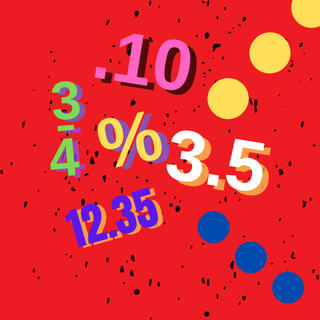
Total problems: 7
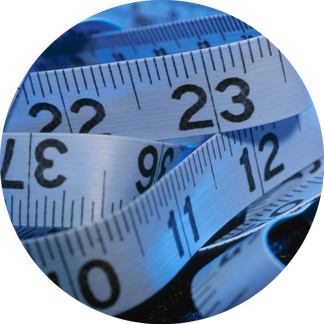
Measurement
Total problems: 10.


Geometry: Lines and Lines of Symmetry
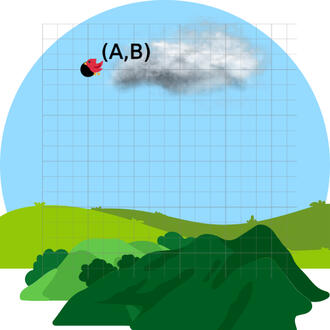
Geometry: Maps + Grids + Ordered Pairs
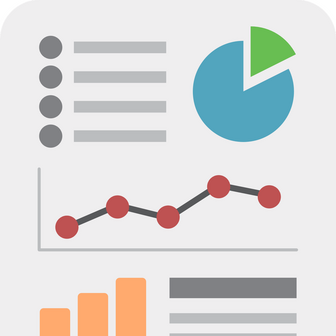
Charts & Graphs

Geometry: Figures, Shapes and Angles

Total problems: 11
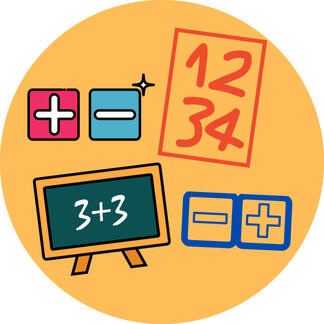
Add & Take Away
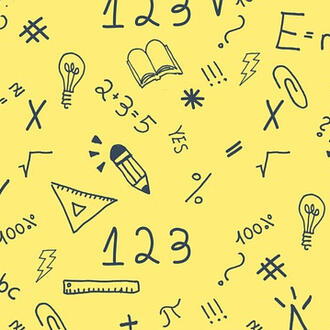
Place Value
Total problems: 14.
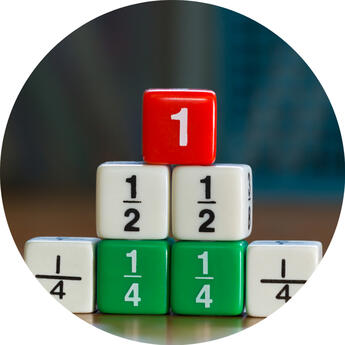
Total problems: 9

Total problems: 5
More coming soon, welcome to usable math. in this interactive website, you will find learning modules designed to develop mathematical problem solving skills among young learners in grades 3 to 6..
Our Modules explore standards-based math concepts including Fractions, Measurement, Geometry, Decimals, Money, and more. Usable Math is free to access using a computer, smartphone, or iPad.
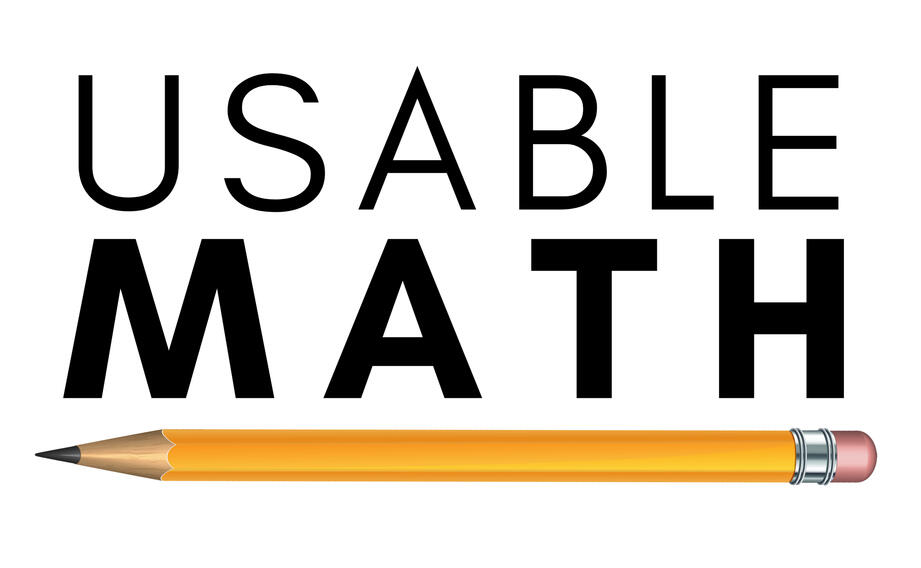
What do we mean by Usable Math?
The word Usable can read as follows:
U Able meaning you can do math problem solving.
Us Able meaning together all of us can do math problem solving.
Usable meaning anyone is able to learn math problem solving - with practice, effort, and support.
What are the Usable Math Learning Modules?
Each learning module in Usable Math consists of a group of math word problems related to a specific mathematical concept. The problems are based on the Massachusetts Mathematics Curriculum Framework↗ as well as Common Core Standards↗ .
Each problem within a module consists of a question, three to four possible answer choices, and problem solving ideas and strategies provided by our four coaches: Estella Explainer, Chef Math Bear, How-to-Hound, and Visual Vicuna.
How are the Modules Displayed online?
Each module has been developed using Google Slides.
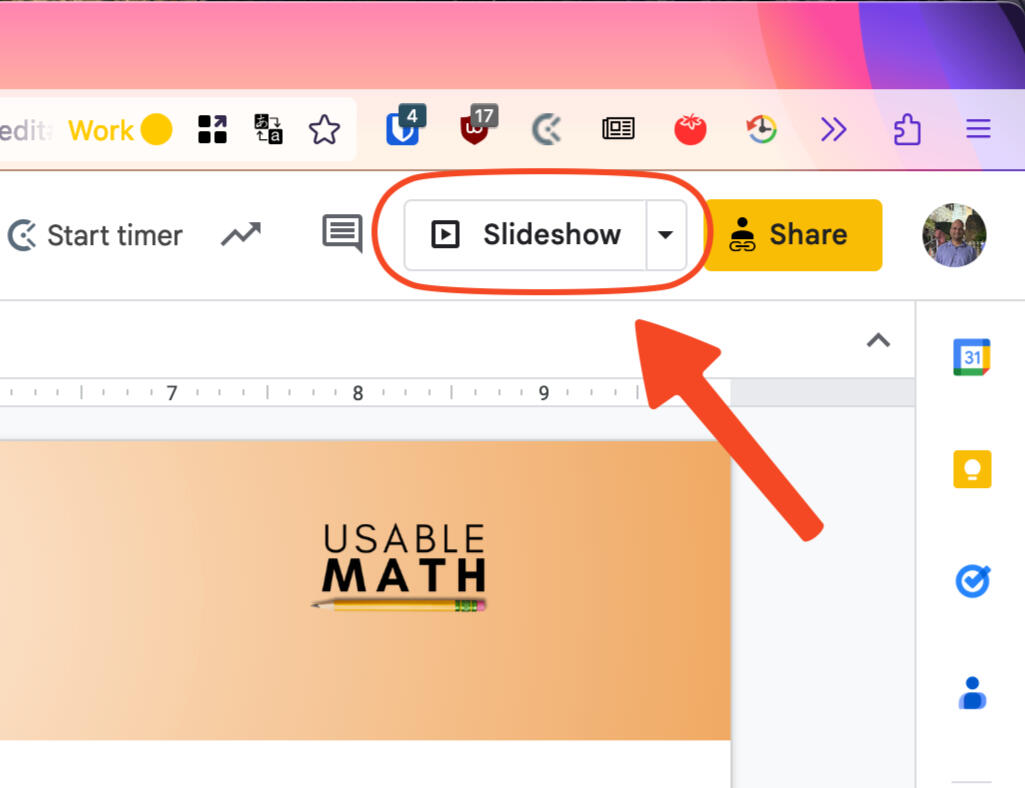
Click. Pause. Solve.
View each module in Slideshow.
How do teachers, students and families use each module?
We strive to make every module on Usable Math kid friendly . Clicking on a module from the selections on the Modules Homepage , each user controls what happens during the learning experience by clicking to open strategies and spending time thinking about them before answering the question. The goal is for students, by themselves, in small groups, or with a teacher, or a family member, to analyze and understand what the problem is asking them to solve before providing an answer.
A question appears without its answer choices or any problem solving strategies.
Click one time and Estella offers a problem solving strategy.
Click again and the Bear offers a different strategy.
Click again and the Hound presents a strategy.
Click again and the Vicuna has an additional strategy approach.
The next click gives the four answer choices, but not yet the correct answer.
The final click highlights the correct answer from among the answer choices.
Before going to the next problem, a motivational statement and gif appears offering encouragement to the users.
What is the purpose of the Motivational Statements between Problems?
Each motivational statement is intended to provide feedback and encouragement to students using the system. Following the insights of researchers into the use of praise and the development of growth mindsets in young learners, these motivational statements are designed to reward students’ effort, hard work, persistence, and belief in one’s self as a learner. We want youngsters to realize that they can learn anything with the right tools, the right beliefs, the right coaches, and their own work and practice.
Need more help? Or have a question?
Reach out to us and we will do our best to get back to you within 12 hours.
RESEARCH AND RESOURCES
We believe that every child deserves a strong foundation in mathematics. our platform is designed to provide engaging and effective math instruction to elementary school students, and we are proud to say that there is science behind the way we deliver this instruction..
UsableMath was formerly known as 4MALITY. As a result of our commitment to providing the best possible math instruction to elementary school students, we have rebranded our platform as UsableMath.com to better reflect our mission and approach to teaching mathematics.
Our platform is designed to provide engaging and effective math instruction to students in grades K-5, using a unique approach that emphasizes hands-on, problem-solving activities. We use interactive, multimedia elements such as videos, games, and simulations to help students understand key mathematical concepts and build a strong foundation of knowledge.
Math Coaches
The use of virtual coaches that provides students with personalized support and feedback, has become increasingly popular in the field of math education. Research has shown that learning companions can be effective in improving student engagement and motivation, as well as helping students to better understand mathematical concepts and build a stronger foundation of knowledge. UsableMath employs the concept of learning companions to help students succeed in mathematics. Our virtual math coaches serve as personal guides, providing students with individualized support and feedback as they work through mathematical concepts and problems. These coaches, or learning companions, are designed to be like friends or mentors, helping students to build their confidence, overcome challenges, and achieve their full potential.
How are we using Generative AI to enhance Usable Math Modules?
As developers of Usable Math, we are aware of both the educational potentials and complexities of Generative AI technologies. In our system, ChatGPT is used to support teachers and other adults to expand and enhance how math can be understood and taught in schools and homes. When you click on the AI icon, you are linked to a blog where we have recorded how AI proposes to solve selected math word problems found in Usable Math modules in a side-by-side view next to the hints we have authored from the perspectives of our four math coaches: Estella Explainer, Chef Math Bear, How-to-Hound, and Visual Vicuna. Our hope is that our strategies along with the AI-developed strategies will give adults more ways to inspire math learning among students.
Look for this icon for AI-enhanced guides.
Prompts for ChatGPT, BingAI and Other Generative AI Tools

Estella Explainer Prompt:
Take the personality of a math coach who provides strategies for understanding language and meaning of questions using kid-friendly vocabulary. The coach’s motto is "My job is to explain the math questions clearly so you know what you are supposed to do to solve the problem. Sometimes there are unfamiliar or confusing terms in the question. I will help you understand what they mean. The first math problem is {replace math word problem here}

Chef Math Bear Prompt:
Take the personality of a math coach who provides computational strategies (addition, subtraction, multiplication and division) for solving problems. The coach’s motto is “I am here to make sure that you know how to do the math needed to answer these questions. Sometimes you need to do addition, subtraction, multiplication or division. Some questions ask you to use fractions, decimals, large numbers, and probability. When you need ideas for what to do, I am ready.

How-to-Hound Prompt:
Take the personality of a math coach who uses strategic thinking clues (rounding, estimation, elimination of wrong answers) to solve math problems. The coach’s motto is “Answering math questions means you need a plan and my role is to help you figure out different strategies for solving problems. Sometimes you can get the correct answer by crossing out the wrong answers; other times you can round numbers up or down to make figuring a problem easier. I know other strategies as well.

Visual Vicuna Prompt:
Take the personality of a math coach who offers ways to see problems and their solutions using animations, pictures, charts and graphs. The coach’s motto is “I find math is a lot clearer when I take the numbers and words and put them into pictures and drawings or move objects around so I can see how to answer a question. When you find yourself unsure about a question, see if one of my ideas will explain what to do.
Growth Mindset Statements
As education researchers, we understand the important role that a positive attitude and motivation play in learner success. That's why we’ve integrated the use of growth mindset and motivational cues in Usable Math. After every math challenge, students receive messages that encourage them to adopt a growth mindset, reinforcing the idea that with effort and persistence, they can improve their math skills and achieve success.

A sample motivational cue from the Fractions module.
Collaborative Problem Solving
We believe in the power of collaboration and teamwork when it comes to learning mathematics. Our platform creates a learning climate that promotes collaborative problem solving, providing students with opportunities to work together and explore mathematical concepts in a supportive and inclusive environment. Whether you are a student, teacher, or parent, we invite you to explore our platform and experience the science behind the way we deliver math instruction to elementary school students. Read more about our work on the Journal of STEM Education↗
Papers, Presentations and Blogs
UsableMath GenAI Prompts: Learn Math with Our Tailor-Made Prompts for ChatGPT, Claude, and other GenAI tools. Usable Math Blog. https://blog.usablemath.org/usablemath-genai-prompts .
Maloy, R. W. & Gattupalli, S. (2024). Prompt Literacy. EdTechnica: The Open Encyclopedia of Educational Technology . https://edtechbooks.org/encyclopedia/prompt_literacy
Gattupalli, S., & Maloy, R. W. (2024). On Human-Centered AI in Education. https://doi.org/10.7275/KXAP-FN13
Gattupalli, S., Edwards, S.A, Maloy, R. W., & Rancourt, M. (2023, October). Designing for Learning: Key Decisions for an Open Online Math Tutor for Elementary Students. Digital Experiences in Mathematics Education . https://doi.org/10.1007/s40751-023-00128-3 .
Gattupalli, S., Maloy, R.W., Edwards, S.A. & Gearty, A. (2023, August 23). Prompt Literacy for STEM Educators: Enhance Your Teaching and Learning with Generative AI. Berkshire Resources for Learning and Innovation (BRLI) Teaching with Technology Conference, Pittsfield, MA. ScholarWorks@UMass.
Blending Gardens and Geometry: Socio-cultural Approaches in Math Ed. Usable Math Blog. https://blog.usablemath.org/blending-gardens-and-geometry-socio-cultural-approaches-in-math-education .
Maloy, R. W., Gattupalli, S., & Edwards, S. A. (2023). Developing Usable Math Online Tutor for Elementary Math Learners with NoCode Tools . Scholarworks@UMass.
Gattupalli, S., Maloy, R. W., & Edwards, S. A. (2023). Prompt Literacy: A Pivotal Educational Skill in the Age of AI . Scholarworks@UMass.
Gattupalli, S., Maloy, R. W., & Edwards, S. (2023). Comparing Teacher-Written and AI-Generated Math Problem Solving Strategies for Elementary School Students: Implications for Classroom Learning . https://doi.org/10.7275/8sgx-xj08
Making Math Usable for Young Learners . Guest post on Rachelle Dené Poth's EdTech blog Learning as I go: Experiences, Reflections, Lessons Learned . January, 2023.
Math Learning Digital Choice Board (2020) . ScholarWorks, University of Massachusetts Amherst.
Maloy, R.W., Razzaq, L., & Edwards, S.A. (2014). Learning by Choosing: Fourth Graders Use of an Online Multimedia Tutoring System for Math Problem Solving . Journal of Interactive Learning Research , 25(1), 51-64.
Razzaq, L., Maloy, R. W., Edwards, S. A., Arroyo, I., & Woolf, B.P. (2011). “4MALITY: Coaching Students with Different Problem Solving Strategies Using an Online Tutoring System” (p. 359-364). In J. A. Konstan, Ricardo Conejo, Jose L, Marzo & Nuria Oliver, User Modeling, Adaptation and Personalization: 19th International Conference, UMAP 2011, Girona, Spain, July 11-15 Proceedings . Berlin: Springer Verlag.
Maloy, R.W., Edwards,S. A. & Anderson G. (2010, January-June). “Teaching Math Problem Solving Using a Web-based Tutoring System, Learning Games, and Students’ Writing .” Journal of STEM Education: Innovations and Research, 11 (1&2).
Edwards, S. A., Maloy, R.W., & Anderson G. (2010, February). “Classroom Characters Coach Students to Success.” Teaching Children Mathematics, 16 (6), 342-349.
Edwards, S. A., Maloy, R. W., & Anderson G. (2009, Summer). “Reading Coaching of Math Word Problems.” Literacy Coaching Clearinghouse . http://www.literacycoachingonline.org/briefs.html .
MEET OUR TEAM
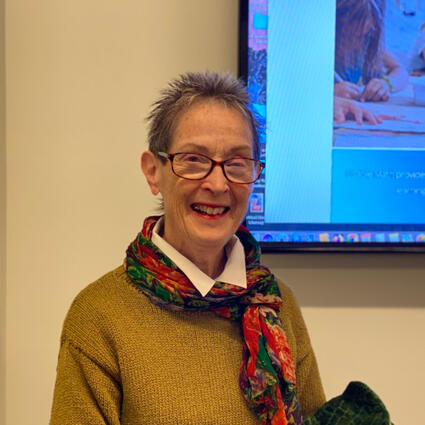
Sharon Edwards , Ph.D.
Teacher Education & Curriculum Studies
College of Education, University of Massachusetts Amherst
Sharon (she/her) is a clinical faculty in the Department of Teacher Education and Curriculum Studies in the College of Education at the University of Massachusetts Amherst. Sharon is the big brains behind the development of Usable Math online math tutor.
Email : sae at umass dot edu

Robert Maloy , Ph.D.
Elementary Math and History
Bob (he/him) is a history and math senior lecturer in the Department of Teacher Education and Curriculum Studies in the College of Education at the University of Massachusetts Amherst. Bob is the creative math content creator and storytelling artist behind Usable Math.
Email : rwm at umass dot edu

Sai Gattupalli
Math, Science & Learning Technologies (MSLT)
Sai (he/him) is a PhD candidate at the University of Massachusetts Amherst, where he researches education technology to make STEM teaching and learning and more effective. Sai is passionate about understanding learner culture to create effective learning experiences. Email : sgattupalli at umass dot edu Website : gattupalli.com
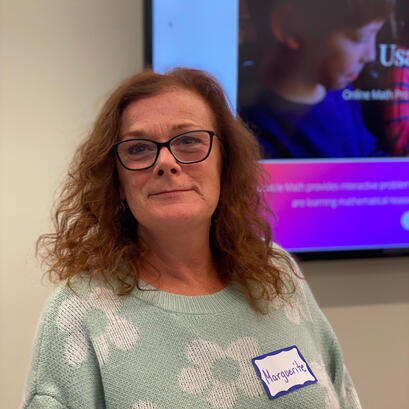
Marguerite Rancourt
Lead Teacher, Discovery School at Four Corners
Greenfield, Massachusetts
Marguerite (she/her) teaches fourth grade at the Discovery School in addition to serving as Lead Teacher for the school. She has created and taught professional development workshop for other elementary school teachers. In 2018, she received the Pioneer Valley Excellence in Teaching Award. Students in her class have been contributing to the design of system throughout the 2022-2023 school year.

Aubrey Coyne
Math Content Designer and Reviewer
College of Education, Commonwealth Honors College, University of Massachusetts Amherst.
Aubrey Coyne (she/her) is a sophomore at the University of Massachusetts Amherst. She is a math tutor and is studying to be an elementary teacher. Aubrey is passionate about finding ways to make learning accessible and enjoyable for all students.
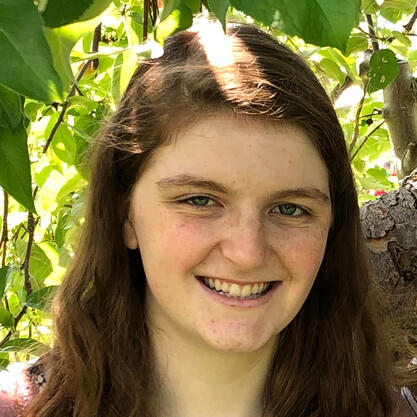
Graduate Student, Math and Digital Media Research Assistant
Sara Shea (she/her) is a graduate student at the University of Massachusetts Amherst. She is currently part of the university’s Collaborative Teacher Education Pathway program, working towards earning her master’s degree in elementary education.

Katie Allan
Math and Digital Media Research Assistant
Katie Allan (she/her) is a senior at the University of Massachusetts Amherst. She is a math major with a concentration in education and passionate about math education.
SUGGESTIONS AND FEEDBACK
We welcome ideas from teachers, students, and families about the usable math system..
Please complete our UsableMath Module Review and Feedback↗ form.
Your responses will help us to improve how the system works instructionally and technically. Let us know any additional thoughts about the problems, characters, hints, gifs, mindset statements and more.

Your message has been received. We will get back to you shortly. The average response time is approximately 6 hours.
Math Solver
Geogebra math solver.
Get accurate solutions and step-by-step explanations for algebra and other math problems, while enhancing your problem-solving skills!

If you're seeing this message, it means we're having trouble loading external resources on our website.
If you're behind a web filter, please make sure that the domains *.kastatic.org and *.kasandbox.org are unblocked.
To log in and use all the features of Khan Academy, please enable JavaScript in your browser.
Unit 10: Advanced: Algebra
About this unit.
Ready for a challenge? This unit covers the hardest algebra questions on the SAT Math test. Work through each skill, taking quizzes and the unit test to level up your mastery progress.
Solving linear equations and inequalities: advanced
- Solving linear equations and linear inequalities | Lesson (Opens a modal)
- Solving linear equations and linear inequalities — Basic example (Opens a modal)
- Solving linear equations and linear inequalities — Harder example (Opens a modal)
- Solving linear equations and inequalities: advanced Get 3 of 4 questions to level up!
Linear equation word problems: advanced
- Understanding linear relationships | Lesson (Opens a modal)
- Linear equation word problems — Basic example (Opens a modal)
- Linear equation word problems — Harder example (Opens a modal)
- Linear equation word problems: advanced Get 3 of 4 questions to level up!
Linear relationship word problems: advanced
- Interpreting linear functions — Basic example (Opens a modal)
- Linear function word problems — Basic example (Opens a modal)
- Linear relationship word problems: advanced Get 3 of 4 questions to level up!
Graphs of linear equations and functions: advanced
- Graphs of linear equations and functions | Lesson (Opens a modal)
- Graphing linear equations — Basic example (Opens a modal)
- Graphing linear equations — Harder example (Opens a modal)
- Graphs of linear equations and functions: advanced Get 3 of 4 questions to level up!
Solving systems of linear equations: advanced
- Solving systems of linear equations | Lesson (Opens a modal)
- Solving systems of linear equations — Basic example (Opens a modal)
- Solving systems of linear equations — Harder example (Opens a modal)
- Solving systems of linear equations: advanced Get 3 of 4 questions to level up!
Systems of linear equations word problems: advanced
- Systems of linear equations word problems | Lesson (Opens a modal)
- Systems of linear equations word problems — Basic example (Opens a modal)
- Systems of linear equations word problems — Harder example (Opens a modal)
- Systems of linear equations word problems: advanced Get 3 of 4 questions to level up!
Linear inequality word problems: advanced
- Linear inequality word problems | Lesson (Opens a modal)
- Linear inequality word problems — Basic example (Opens a modal)
- Systems of linear inequalities word problems — Harder example (Opens a modal)
- Linear inequality word problems: advanced Get 3 of 4 questions to level up!
Graphs of linear systems and inequalities: advanced
- Graphs of linear systems and inequalities | Lesson (Opens a modal)
- Graphs of linear systems and inequalities — Basic example (Opens a modal)
- Graphs of linear systems and inequalities — Harder example (Opens a modal)
- Graphs of linear systems and inequalities: advanced Get 3 of 4 questions to level up!
Our mission is to provide a free, world-class education to anyone, anywhere.
Khan Academy is a 501(c)(3) nonprofit organization. Donate or volunteer today!
Site Navigation
- Our interns
- Our content specialists
- Our leadership
- Our supporters
- Our contributors
- Our finances
- Internships
- Help center
- Support community
- Share your story
Download our apps
Please ensure that your password is at least 8 characters and contains each of the following:
- a special character: @$#!%*?&
- Share full article
For more audio journalism and storytelling, download New York Times Audio , a new iOS app available for news subscribers.

- April 16, 2024 • 29:29 A.I.’s Original Sin
- April 15, 2024 • 24:07 Iran’s Unprecedented Attack on Israel
- April 14, 2024 • 46:17 The Sunday Read: ‘What I Saw Working at The National Enquirer During Donald Trump’s Rise’
- April 12, 2024 • 34:23 How One Family Lost $900,000 in a Timeshare Scam
- April 11, 2024 • 28:39 The Staggering Success of Trump’s Trial Delay Tactics
- April 10, 2024 • 22:49 Trump’s Abortion Dilemma
- April 9, 2024 • 30:48 How Tesla Planted the Seeds for Its Own Potential Downfall
- April 8, 2024 • 30:28 The Eclipse Chaser
- April 7, 2024 The Sunday Read: ‘What Deathbed Visions Teach Us About Living’
- April 5, 2024 • 29:11 An Engineering Experiment to Cool the Earth
- April 4, 2024 • 32:37 Israel’s Deadly Airstrike on the World Central Kitchen
- April 3, 2024 • 27:42 The Accidental Tax Cutter in Chief
A.I.’s Original Sin
A times investigation found that tech giants altered their own rules to train their newest artificial intelligence systems..
Hosted by Michael Barbaro
Featuring Cade Metz
Produced by Stella Tan , Michael Simon Johnson , Mooj Zadie and Rikki Novetsky
Edited by Marc Georges and Liz O. Baylen
Original music by Diane Wong , Dan Powell and Pat McCusker
Engineered by Chris Wood
Listen and follow The Daily Apple Podcasts | Spotify | Amazon Music
A Times investigation shows how the country’s biggest technology companies, as they raced to build powerful new artificial intelligence systems, bent and broke the rules from the start.
Cade Metz, a technology reporter for The Times, explains what he uncovered.
On today’s episode

Cade Metz , a technology reporter for The New York Times.

Background reading
How tech giants cut corners to harvest data for A.I.
What to know about tech companies using A.I. to teach their own A.I.
There are a lot of ways to listen to The Daily. Here’s how.
We aim to make transcripts available the next workday after an episode’s publication. You can find them at the top of the page.
The Daily is made by Rachel Quester, Lynsea Garrison, Clare Toeniskoetter, Paige Cowett, Michael Simon Johnson, Brad Fisher, Chris Wood, Jessica Cheung, Stella Tan, Alexandra Leigh Young, Lisa Chow, Eric Krupke, Marc Georges, Luke Vander Ploeg, M.J. Davis Lin, Dan Powell, Sydney Harper, Mike Benoist, Liz O. Baylen, Asthaa Chaturvedi, Rachelle Bonja, Diana Nguyen, Marion Lozano, Corey Schreppel, Rob Szypko, Elisheba Ittoop, Mooj Zadie, Patricia Willens, Rowan Niemisto, Jody Becker, Rikki Novetsky, John Ketchum, Nina Feldman, Will Reid, Carlos Prieto, Ben Calhoun, Susan Lee, Lexie Diao, Mary Wilson, Alex Stern, Dan Farrell, Sophia Lanman, Shannon Lin, Diane Wong, Devon Taylor, Alyssa Moxley, Summer Thomad, Olivia Natt, Daniel Ramirez and Brendan Klinkenberg.
Our theme music is by Jim Brunberg and Ben Landsverk of Wonderly. Special thanks to Sam Dolnick, Paula Szuchman, Lisa Tobin, Larissa Anderson, Julia Simon, Sofia Milan, Mahima Chablani, Elizabeth Davis-Moorer, Jeffrey Miranda, Renan Borelli, Maddy Masiello, Isabella Anderson and Nina Lassam.
Cade Metz writes about artificial intelligence, driverless cars, robotics, virtual reality and other emerging areas of technology. More about Cade Metz
Advertisement

IMAGES
VIDEO
COMMENTS
The maps are 1) Example-Conclusion Map, 2) the Multi-Rule Map and 3) the Math-Breaker Map. The purpose of these maps is twofold: 1) to provide support in learning a specific topic and 2) to map out problem-solving strategies that are generic enough to be used on a large variety of math content.
What is the Problem Solving Maps method? Problem Solving Maps (PSM) are graphical representations of critical thinking processes needed to solve math problems successfully. The maps are 1) Example-Conclusion Map, 2) the Multi-Rule Map and 3) the Math-Breaker Map. The purpose of these maps is twofold: 1) to provide support in learning a specific ...
steps of a problem-solving process, and Bridge Maps to visualize relationships. Recommendation #4: Expose students to multiple problem-solving strategies. Students learn to use the Maps to think about problems in different ways (e.g., numerically vs. algebraically) and represent their thinking visually. Students may use a multiple-Map process to
PSM was created by Dr. Danilo Sirias and is designed to help students develop important thinking skills to solve math problems. To learn more about PSM, take the free video course at https://learn ...
Math; MAP Recommended Practice; Unit 20: Operations and Algebra 229+ 10,900 possible mastery points. Mastered. ... Systems of equations word problems (with zero and infinite solutions) Get 3 of 4 questions to level up! ... Solving two-variable inequalities word problem (Opens a modal)
What is the Problem Solving Maps method? Problem Solving Maps (PSM) are graphical representations of critical thinking processes needed to solve math problems successfully. The maps are 1) Example-Conclusion Map, 2) the Multi-Rule Map and 3) the Math-Breaker Map. The purpose of these maps is twofold: 1) to provide support in learning a specific ...
MAP Recommended Practice 55 units · 1,645 skills. Unit 1 Geometry < 159. Unit 2 Geometry 159-175. Unit 3 Geometry 176-188. Unit 4 Geometry 189-200. Unit 5 Geometry 201-210. Unit 6 Geometry 211-217. Unit 7 Geometry 218-221. Unit 8 Geometry 222-226.
Advantages Problem solving maps can be used to teach a large variety of topics For students, the skills are transferable from one topic to the next They can be easily introduced within the current curriculum It does not take a long time for teachers to learn them. www.problemsolvingmaps.com (c) Danilo Sirias 2012. 41.
Students in a Thinking Maps school learn how to use the Maps in a variety of ways to build mathematical knowledge, skills and reasoning. For example, students learn to use the Maps to: Use "signal words" like take apart, leads to, is the same as, or types of to activate the right kind of thinking for a problem.
Problem Solving FALs are intended to assess and develop students' capacity to select and deploy their mathematical knowledge in non-routine contexts and typically involve students in comparing and critiquing alternative approaches to solving a problem. In this PD module, we focus on Problem Solving lessons. In most Mathematics classrooms ...
The Problem Solving Maps are designed to be applicable across multiple math topics and grade levels, allowing students to participate in a streamlined learning process that grows with them, from elementary school to post-secondary education. When students use Problem Solving Maps they learn both product and process.
The Mathematics Assessment Project is part of the Math Design Collaborative initiated by the Bill & Melinda Gates Foundation. The project set out to design and develop well-engineered tools for formative and summative assessment that expose students' mathematical knowledge and reasoning, helping teachers guide them towards improvement and ...
Students recognized that Thinking Maps® helped them solve math problems, break problems down and make problems easier to understand. The data from the survey is consistent with the interview data with 54.4% of students agreeing or strongly agreeing that Thinking Maps® is beneficial for solving math problems and 64.9% of the students agreeing ...
Problem-solving, reasoning, and proofs; For the higher grades' MAP math tests, students may need a calculator to help solve some of the problems. In this case, an on-screen calculator will appear. Scratch paper is provided for all grades. NWEA MAP Math Sample Questions. All NWEA math test questions are multiple-choice.
Friday math movie - Math problem solving with mind maps. Here's a collection of tips for solving problems. You probably need to stop it every now and then to take in the suggestions given. I like the soundtrack. It sounds like Johann Sebastian Bach, but I couldn't recall hearing it before. It turns out the piece was written by a 19-year old ...
Geometry: Maps + Grids + Ordered Pairs Grade: 3-5 Total problems: 6. Charts & Graphs Grade: 3-5 Total problems: 10. Geometry: Figures, Shapes and Angles Grade: 3-5 Total problems: 7. ... Us Able meaning together all of us can do math problem solving. Usable meaning anyone is able to learn math problem solving - with practice, effort, and support.
Get accurate solutions and step-by-step explanations for algebra and other math problems with the free GeoGebra Math Solver. Enhance your problem-solving skills while learning how to solve equations on your own. Try it now!
This unit covers the hardest algebra questions on the SAT Math test. Work through each skill, taking quizzes and the unit test to level up your mastery progress. ... Advanced: Problem solving and data analysis. Unit 12. Advanced: Advanced math. Unit 13. Advanced: Geometry and trigonometry. Course challenge. Test your knowledge of the skills in ...
Free math problem solver answers your algebra homework questions with step-by-step explanations. Mathway. Visit Mathway on the web. Start 7-day free trial on the app. Start 7-day free trial on the app. Download free on Amazon. Download free in Windows Store. get Go. Algebra. Basic Math. Pre-Algebra. Algebra. Trigonometry. Precalculus.
Includes: Match polynomials and graphs | Find the radius or diameter of a circle | Solve a right triangle | Graph sine and cosine functions | Graph a discrete probability distribution. See all 206 skills. Discover thousands of math skills covering pre-K to 12th grade, from counting to calculus, with infinite questions that adapt to each student ...
Free, online math games and more at MathPlayground.com! Problem solving, logic games and number puzzles kids love to play.
There are middle and high school competition math camps as well as Math Beasts camps that review key topics coupled with fun explorations covering areas such as graph theory (Math Beasts Camp 6), cryptography (Math Beasts Camp 7-8), and topology (Math Beasts Camp 8-9)! Our full course list for upcoming classes is below:
Art of Problem Solving. AoPS Online. Math texts, online classes, and morefor students in grades 5-12. Visit AoPS Online ‚. Books for Grades 5-12Online Courses. Beast Academy. Engaging math books and online learningfor students ages 6-13. Visit Beast Academy ‚.
A Times investigation found that tech giants altered their own rules to train their newest artificial intelligence systems. Hosted by Michael Barbaro. Featuring Cade Metz. Produced by Stella Tan ...